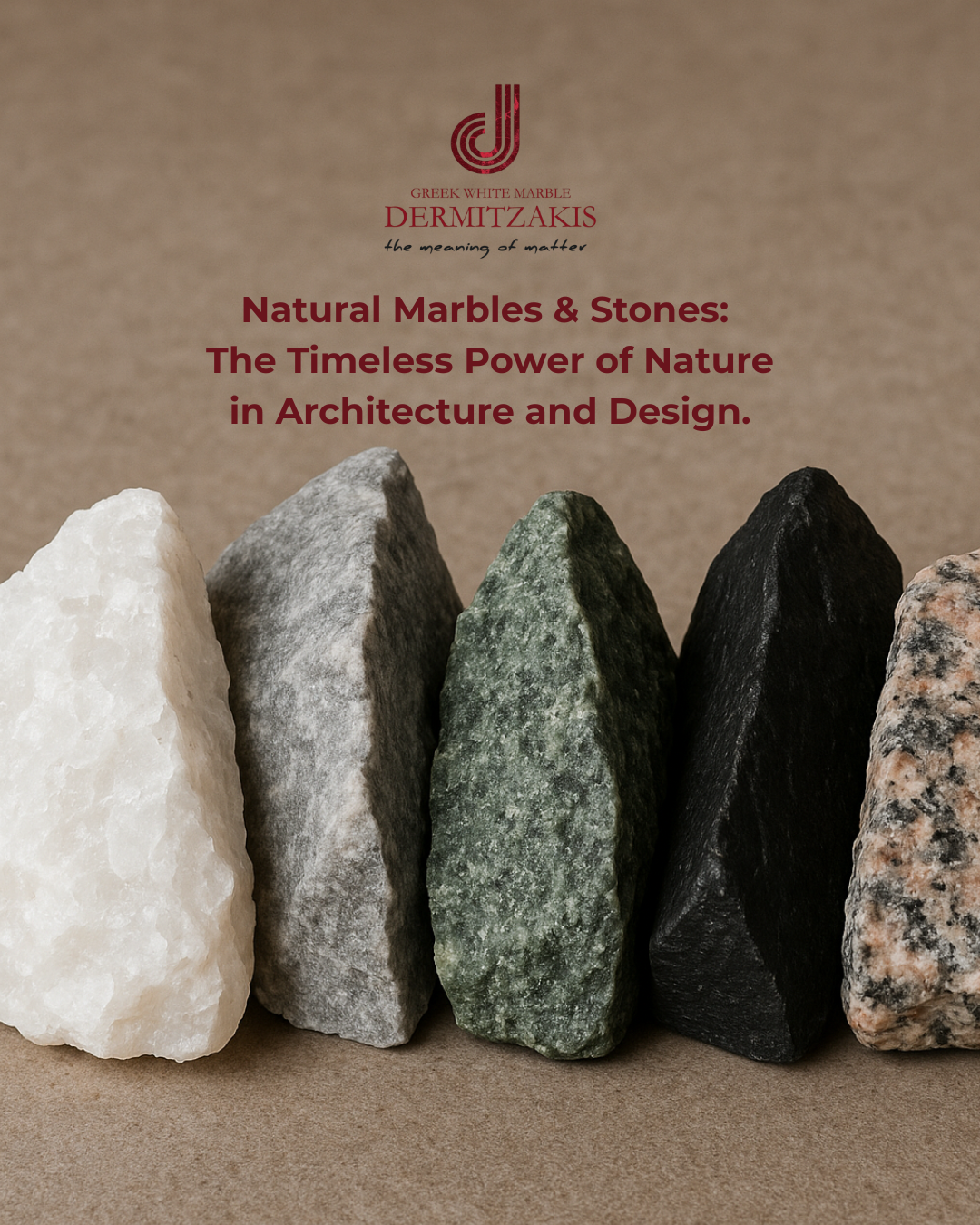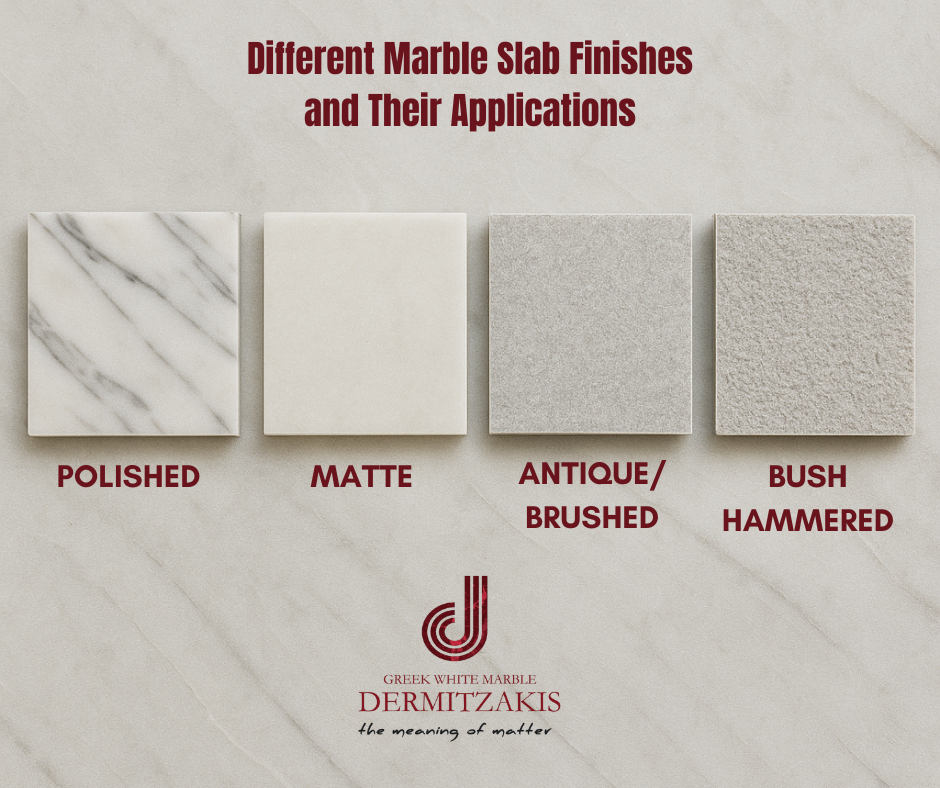
Natural Marbles & Stones: The Timeless Power of Nature in Architecture and Design
The properties of natural marbles and stones vary depending on the type of rock, its mineral composition, and the way it was formed. However, they can be described based on some fundamental characteristics:
General Properties of Natural Stones (such as Marble, Granite, Limestone, etc.):
Aesthetic Value and Uniqueness:
Each piece is unique in texture, color, and pattern (veins, lines), offering a timeless and luxurious appearance.
Coloration:
It depends on the mineral impurities present (for example, in marble, impurities tint the originally white calcite).
Strength and Durability:
High Resistance:
In general, natural stones are resistant to wear, weathering, and use, with a lifespan that can last for decades or even centuries.
Mechanical Properties:
Their main mechanical characteristics (e.g., compressive strength) are influenced by the stone’s density and porosity — strength increases with density and decreases with porosity.
Processing and Workability:
Most stones (except very porous ones) can be easily cut, carved, polished, and finished — especially fine-grained marbles.
Hardness:
This varies greatly depending on the type of stone.
Physical Properties:
Density & Porosity:
These are key properties that affect mechanical strength and water absorption.
Resistance to Temperature Changes:
Some stones show greater resistance than others.
Other Properties:
- Fire Resistance: They are non-flammable materials.
- Thermal Storage Capacity: Some, like marble slabs, are used in heating systems due to their ability to store and radiate heat in winter and maintain cold temperature in the summer.
- Environmental Friendliness: They are natural and recyclable materials.
Special Characteristics of Marble:
- Composition:
Marble is a metamorphic rock that originates from limestones. Its main component is calcite (CaCO₃). - Crystalline Structure:
This structure provides exceptional aesthetic quality and makes marble ideal for sculpture. - Translucency:
Some white marbles, such as Parian, are notably translucent. - Grain Size:
Marbles are classified as fine-, medium-, or coarse-grained — a property that affects both workability and cohesion.
Acid Sensitivity:
Carbonate stones (like marble) are vulnerable to acids (e.g., carbonic acid from acid rain), which can gradually erode them.
Important Note
Properties differ significantly among various types of natural stone. For every specific application, the precise physical and mechanical properties of the selected stone must be taken into account.
Discover how the natural beauty, strength, and uniqueness of stone can transform any space into a work of art.
Invest in natural elegance — choose the right stone for your next project today!


















